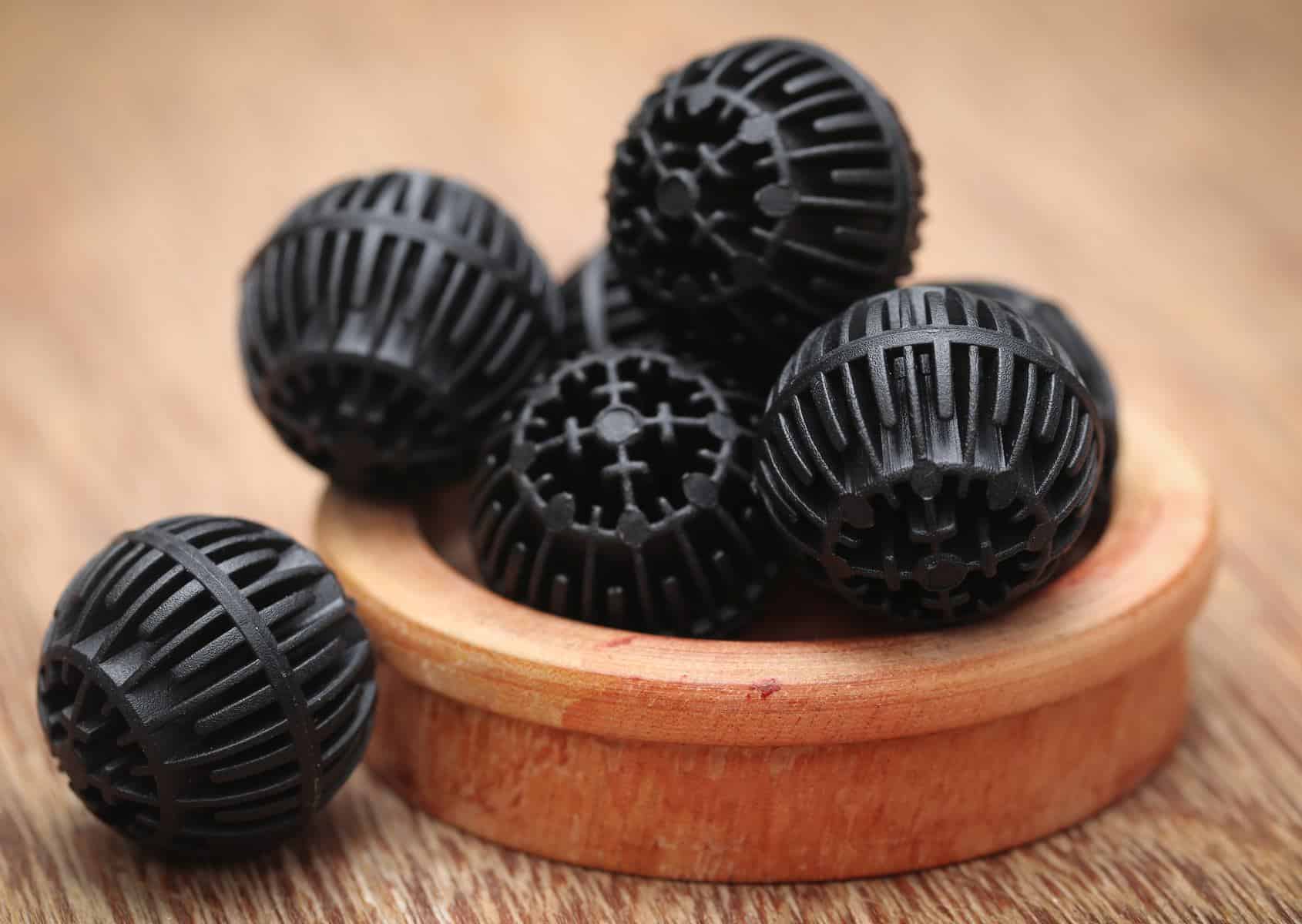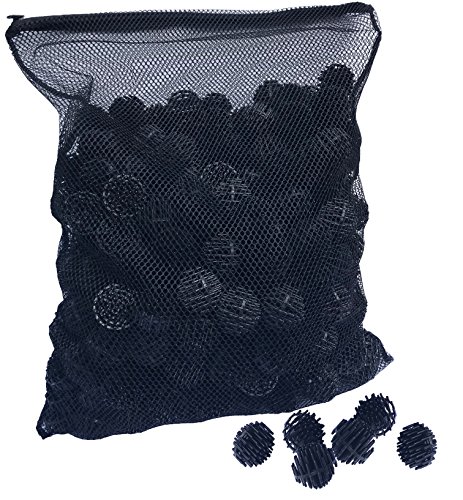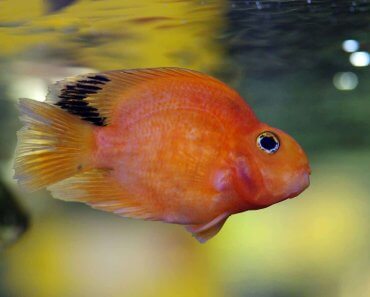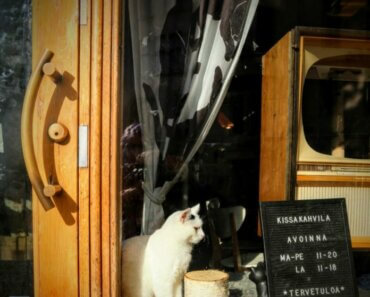A couple of years ago, bio balls were considered to be the best type of filtration media you could get for your aquarium. They provide additional surface area for beneficial bacteria to grow and can even help your water become more aerated. The main problem many hobbyists found is that they were simply catching too much detritus. Today, there are still a number of good reasons to still use bio balls in your filtration, without causing excess nutrients!
Keep reading to find out everything you need to know about aquarium bio balls, how they benefit your filtration, and the best 3 bio balls for your freshwater or saltwater aquarium or pond!
What are bio balls?
Bio balls are often referred to as a ‘nitrate factory’ by many hobbyists today. This is because the ball is designed with many holes and grooves to increase surface area, but as a result, creates many stagnant areas where detritus can easily get trapped. This detritus eventually breaks down and starts to leak ammonia, nitrites, and nitrates into the system which can ultimately affect aquarium fish and other livestock. For this reason, many hobbyists have moved away from them onto other bio media.
However, there are still many hobbyists who find bio balls to be an efficient and beneficial addition to their aquarium filter; the real trick is knowing how to set up your filter with mechanical filtration so that minimal detritus makes it way through the bio balls in the first place. One easy way to do this is by placing a filter pad before the water is circulated through the bio balls. This mechanical filter pad will usually need cleaning every couple of weeks.
It is also important to remember that bio balls are not meant to stay submerged underwater. They are designed for water to trickle over them so that beneficial bacteria stays wet while the tank water is aerated. This also helps wash away any loose detritus and keeps the bio balls clean for longer.
That being said, bio balls will also need regular cleaning. This can easily be done by removing small portions of them from the filter and rinsing them in used-aquarium water in order to keep the bacteria alive. In addition, these bio balls house plenty of bacteria that can easily be transferred to seed a new tank setup.
How long does it take for bacteria to grow on bio balls?
If you have an established population of bacteria in your aquarium already, then it shouldn’t take long for bacteria to populate a new surface area. Within a couple of weeks, the new bio balls should have some signs of bacteria colonies forming.
However, if you’re setting up a new system entirely, then it might take a little longer for bacteria to establish itself and stabilize. Most new aquariums take 3-6 weeks to fully cycle, meaning that the nitrogen cycle can successfully process ammonia into nitrates.
Do bio balls need to be replaced?
Bio balls don’t need to be replaced as long as they are kept clean and show no signs of falling apart. Replacing bio balls will actually be detrimental to your system as they make up a good portion of your biological filter that allows your fish tank to sustain itself.
The best 3 bio balls for your aquarium filter
If you’re looking to try bio ball filtration in your aquarium system, then one of these listed products might be best for you. These are the top 3 bio balls currently available based on design, applicability, customer reviews, and price.
Marineland Bio-Filter Balls, Supports Biological Aquarium Filtration, Fits All C-Series Canister Filters
These Marineland Bio-Filter Balls are designed for all C-Series and Magniflow Canister Filters specifically, but can also be used in hang on the back filters and wet/dry sump systems as well. This package includes 90 plastic bio balls that are multi-faceted for optimal bacteria growth. Marineland Bio-Filter Balls come from a trustworthy aquarium brand and do best when used with the recommended equipment.
When using these bio balls for other purposes, hobbyists have found them to be a little small in a sump setting; reviews have also stated that the total count included in the package is usually less than 90. The plastic material is not permeable and does not allow for the additional deeper surface area needed by those bacteria that perform denitrification.
What we like:
- Specific design for certain filters
- Smaller design for increased surface area by the number
- Inexpensive
What could be better:
- Plastic material does not allow some bacteria to grow
- The total package count is usually less than advertised
Bio Balls Filter Media – 1.5 Inch Large Bio Ball for Pond Filter – Perfect Bio Balls for Aquarium and Pond Filter Media – Made in The USA
- OUTSTANDING FILTRATION! Each bio ball is covered in spines to dramatically increase the surface area of each ball to nearly 2 square feet providing space for a massive number of beneficial bacteria to…
- TOUGH AND UNIQUE! Our bio balls’ spherical shape and precise spine placement permits them to pack tightly into any shape or filter type without losing surface area. Molded from high density plastic,…
- TRUSTED POND MEDIA! Our Bio balls are 100% polypropylene making them a safe reliable bio filter media for fresh and saltwater. They are manufactured for use in koi and water garden ponds, freshwater…
If you have a goldfish or koi pond, then Bio Balls Filter Media – 1.5 Inch Large Bio Ball for Pond Filter might fit your system exactly. This product allows the customer to choose between 100 large bio balls with an included 10 x 12 inch (25.4 x 30.5 cm) mesh bag, one 13 x 20 inch (33.0 x 50.8 cm) mesh bag, three 13 x 20 inch (33.0 x 50.8 cm) mesh bags, or 300 large bio balls with an included 13 x 20 inch (33.0 x 50.8 cm) mesh bag; 300 large bio balls will treat 1,000 gallons (3785 L).
These plastic bio balls are 1.5 (3.8 cm) in diameter and designed with spines to allow for the most debris to pass through while providing substantial surface area for bacteria to grow and for tight packing together. The mesh bags are closed tight with a plastic zipper and have wide stitching to allow the most debris to flow through as well.
Despite advertising little to no debris build-up, customer reviews have found that this design catches a lot of waste that will need regular cleaning. Otherwise, hobbyists have had success using this bio media for goldfish and koi pond setups.
What we like:
- 100% aquarium-grade polypropylene material for freshwater and saltwater purposes
- Several product options dependent on system demand and need; filter media bags included or sold separately
- Larger bio balls with fluid design and secure mesh bag
- Packaged and designed with goldfish and koi ponds in mind
What could be better:
- Customers found that the bio balls clog easily
- Relatively expensive
AQUANEAT Aquarium 1″ Bio Balls Fish Tank Media Sump Pond Canister Filter Media Free Media Bag 500/1000pc
AQUANEAT Aquarium 1″ Bio Balls are ideal with either aquarium or pond setups. These bio balls are 1 inch (2.5 cm) in diameter and are packaged in 16 x 16 inch (40.6 cm) media bags; product options include 500 pieces in one media bag, 1,000 pieces in two media bags, or 4,000 pieces in eight media bags.
Every individual bio ball is designed with a bio-sponge inside, which increases surface area and helps filter out additional debris through mechanical means. The media bag can be sealed with a nylon zipper.
Customers find that these bio balls tend to be a little more expensive than competitors, but the internal sponge and grooved design have proven to be enough biological filtration for most large aquarium and pond systems.
What we like:
- Bio balls feature an internal sponge and grooved design for best bacteria coverage
- Number of bio balls split up evenly among filter media bags
- 100% aquarium safe product with polypropylene bio balls
What could be better:
- The internal sponge could cause more debris to build up and cause cleaning to be more difficult
- One size option for media bags
- Relatively expensive
Are bio balls better than ceramic filter media?
In order to answer this question, you need to evaluate what would support your tank the best. In most small systems, ceramic rings and noodles are better than bio balls. However, bio balls might be the better option if you have a filter or sump tank with high water flow, which is commonly found in large aquarium and pond settings.
Bio balls can provide extra surface area for beneficial bacteria to grow if used right. This bacteria is mostly aerobic, which means that in order to convert ammonia to nitrite and eventually to nitrate, oxygen is needed. If placed in a high flow filter or sump, agitated water filled with dissolved oxygen is constantly being flushed past this media, allowing that bacteria to complete those processes.
However, the bacteria that converts these nitrates back into nitrogen via denitrification in anaerobic. This means that these bacteria can only populate areas that do not have free oxygen in order to perform denitrification. With bio balls, anaerobic conditions are not created and denitrification is not performed due to the non-porous surface of the plastic and overall spiral designs.
On the other hand, ceramic rings and noodles are very porous and allow denitrifying bacteria to colonize the media, allowing all forms of nitrogen to be processed. For most hobbyists though, nitrates are usually removed through regular water changes; good tank maintenance is still the best way to keep water parameters in check and filter media should only support the bacteria needed to keep the system running.
Bacteria populations only grow according to what the system can support. This means that if your waste input is low, bacteria won’t have a lot to process and so populations will remain smaller and vice versa. In especially large systems with big bioloads, any additional surface area will help your aquarium be more balanced overall. Both bio balls and ceramic rings and noodles will provide that space needed and keep water parameters in check as long as regular maintenance is continued.

Conclusion
Bio balls may have gone out of aquarium fashion a few years ago, but many hobbyists still find them completely efficient in wet/dry sumps and pond settings especially. There are a few things to consider before using bio ball media in your aquarium system, like the size and design as well as the way they come packaged in media bags. You will also need to consider that bio balls need some extra cleaning and don’t allow the necessary bacteria to grow that perform denitrification.
If you have any questions about bio ball filtration, the best type of filtration for your aquarium, or have had experience using bio balls in your own fish tank, don’t hesitate to leave a comment below!
- https://www.amazon.com/Marineland-PA11486-Canister-Bio-Balls-90-Count/dp/B000NRXB5G/ref=sr_1_3?dchild=1&keywords=Marineland+Bio-Filter+Balls&sr=8-3
- https://www.amazon.com/Aquatic-Experts-Balls-Filter-Media/dp/B07613BQ2N/ref=sr_1_2?dchild=1&keywords=bio+balls&qid=1604697486&sr=8-2
- https://www.amazon.com/AQUANEAT-Balls-Aquarium-Filter-Design/dp/B01M368YO9/ref=sr_1_4?dchild=1&keywords=aquarium+bio+balls&qid=1604699581&sr=8-4



























